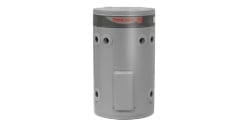What is structured cabling?
Structured cabling is a comprehensive telecommunications infrastructure comprising of cabling and associated hardware which is able to support the building or businesses current and future hardware needs.
Structured cabling is utilised in various applications such as data centres, apartment buildings, and offices. It can be an effective solution for data transmission for computer networks, video or phone services, security alarms, or security access systems.
Modern cabling systems use Cat 5, Cat 6, fibre optic cabling, and modular connectors.
Structured cabling design considerations
Structured cabling requires custom design due to the unique aspects of each building, the cable used, the required function of the installation, and the hardware the cabling needs to service. Consideration needs to be given in retrofit cabling installations to work around existing cabling systems.
Individual customer requirements will be a significant consideration when designing the system, as well as manufacturer warranty installation and use guidelines.
Benefits of structured cabling include:
- Smooth operation – streamlined, organised, easy to use cabling systems
- Future proof – set up correctly your system will easily handle your current data or phone requirements as well as adapting to future hardware upgrades and requirements.
- Versatile – adjustments to the network are easily achieved.
- Tidy – a neat, tidy setup reduces the risk of unplugging the wrong port or rogue cables becoming a trip hazard.
- Fast – modern cables provide a fast, reliable data and phone connection
- Dependable – reduces downtime
- Efficient repairs – time is not wasted during repairs looking for the correct cable
Structured cabling systems are made up of six subsystems:
- Entrance facilities – where the cabling system meets the access provider
- Equipment room
- Backbone cabling – provides the connection between telecommunication rooms, equipment room, and entrance facilities
- Telecommunications room
- Horizontal cabling
- Work area
In Australia, the Telecommunications Cabling Provider Rules 2014 regulate the cabling industry. More information on the data cable rules and industry requirements can be found on the ACMA website – acma.gov.au



